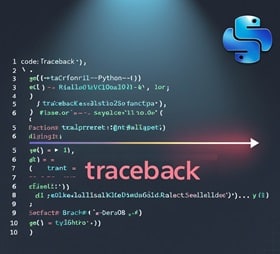Numpy is an acronym for “Numeric Python” or “Numerical Python“.It is an open-source core library for scientific computing(mathematical, logical) in Python. NumPy supports a large number of mathematical operations,making it essential for data manipulation and analysis in Python.In NumPy array operations, several routines are available for efficient manipulation of elements in the ndarray object. These operations allow for powerful and optimized handling of data.
Some of these operations can be classified into categories such as basic arithmetic, aggregation, and advanced mathematical functions, which will be explored in detail below.
1. Changing Shape
1.1 flat
This function is used to returns a 1-D iterator over the array.
This function behaves similar to Python’s built-in iterator.
Note
This function is not available for List of ndarrays
It does not depend on the order i.e C and F
C(read/write the elements using C-like index order)
F(read/write the elements using Fortran-like index order)
Syntax
numpy.ndarray.flat
numpy.ndarray.flat[i]
where i is index number
Example
>>> import numpy as np
>>> a1=np.array([9,8,6,3,2,1,5,4,7])
>>> a=a1.reshape(3,3,order='F')
>>> a #The Original array
array([[9, 3, 5],
[8, 2, 4],
[6, 1, 7]])
>>> a.flat[3]
>>> 8 #After applying thflat function
>>> a1=np.array([9,8,6,3,2,1,5,4,7])
>>> a=a1.reshape(3,3,order='C')
>>> a #The Original array
array([[9, 8, 6],
[3, 2, 1],
[5, 4, 7]])
>>> a.flat[3]
>>> 3 #After applying the flat function
An assignment example using a flat function
>>> a1=np.array([9,8,6,3,2,1,5,4,7])
>>> a=a1.reshape(3,3,order='F')
>>> a #The Original array
array([[9, 3, 5],
[8, 2, 4],
[6, 1, 7]])
>>> a.flat[5]=9
>>> a.flat[[1,3]]=1 #We can use more than one index number
>>> a #After applying the flat function
array([[9, 1, 5],
[1, 2, 9],
[6, 1, 7]])
1.2. flatten
Flatten returns a copy of single dimensional array by merging all sub-arrays.
This is a function of ndarray object
Note-This function is not available for List of ndarrays object
Syntax
numpy.ndarray.flatten(order='C')
Parameter
order(optional):'C','F','A','K'
Default order is C
'C' means to flatten in row-major(C-style) order.
'F' means to flatten in column-major (Fortran-style) order.
'A' means to flatten in column-major order if a is Fortran contiguous in memory, row-major order otherwise.
'K' means to flatten a in the order the elements occur in memory.
Example
>>> import numpy as np
>>> a = np.array([[1,5], [3,4]])
>>> a.flatten(order='C')
>>> a.flatten() #Default order is C
array([1, 5, 3, 4])
>>> a.flatten(order='F')
array([1, 3, 5, 4])
1.3. ravel
Ravel is a library level function i.e numpy.
This function returns a contiguous flattened array.
Return array will have the same type as the input array.
Syntax
numpy.ravel(arr,order='C') Parameter arr-input array order-optional-{'C','F','A','K'} Default order is C 'C' means to flatten in row-major(C-style) order. 'F' means to flatten in column-major (Fortran-style) order. 'A' means to flatten in column-major order if a is Fortran contiguous in memory, row-major order otherwise. 'K' means to flatten a in the order the elements occur in memory.
Example
>>> import numpy as np
>>> a = np.array([(1,2,3,4),(3,1,4,2)]) #Shape of array a is (2, 4)
>>> b = a.ravel() #np.ravel(a)
>>> b #Shape of array b is (8,)
array([1, 2, 3, 4, 3, 1, 4, 2])
It is equivalent to reshape(-1, order=order).
>>> b= a.reshape(-1)
>>> b
array([1, 2, 3, 4, 3, 1, 4, 2])
>>> b=a.ravel(order='F') #np.ravel(a,order='F')
>>> b
array([1, 3, 2, 1, 3, 4, 4, 2])
When an order is ‘A’, it will preserve the array‘s ‘C‘ or ‘F‘ ordering:
>>> b=a.ravel(order='A')
>>> b
array([1, 2, 3, 4, 3, 1, 4, 2])
When an order is ‘K’, it will preserve orderings that are neither ‘C’ nor ‘F’, but won’t reverse axes:
>>> a = np.arange(12).reshape(2,3,2).swapaxes(1,2)
>>> a
array([[[ 0, 2, 4],
[ 1, 3, 5]],
[[ 6, 8, 10],
[ 7, 9, 11]]])
>>> a.ravel(order='C')
array([ 0, 2, 4, 1, 3, 5, 6, 8, 10, 7, 9, 11])
>>> a.ravel(order='K')
array([ 0, 1, 2, 3, 4, 5, 6, 7, 8, 9, 10, 11])
1.4. reshape
This function gives a new shape to an array without changing the data.
It is not always possible to change the shape of arrays without copying the data.
Syntax
numpy.ravel(arr,newshape,order)
arr-Array to be reshaped.
newshape : The new shape should be compatible with the original shape.
order : {'C', 'F', 'A'}, optional
'C' means to read / write the elements using C-like index order
'F' means to read / write the elements using Fortran-like index order,
'A' means to read / write the elements in Fortran-like index order if a is Fortran contiguous in memory, C-like order otherwise.
Example
>>> a =np.array([[10,20,30], [40,50,60]]) >>> np.reshape(a,6,order='C') # same as np.reshape(a,6) array([10, 20, 30, 40, 50, 60]) >>> np.reshape(a,6,order='F') array([10, 40, 20, 50, 30, 60]) >>>np.reshape(a,(3,2)) array([[10, 20], [30, 40], [50, 60]])



